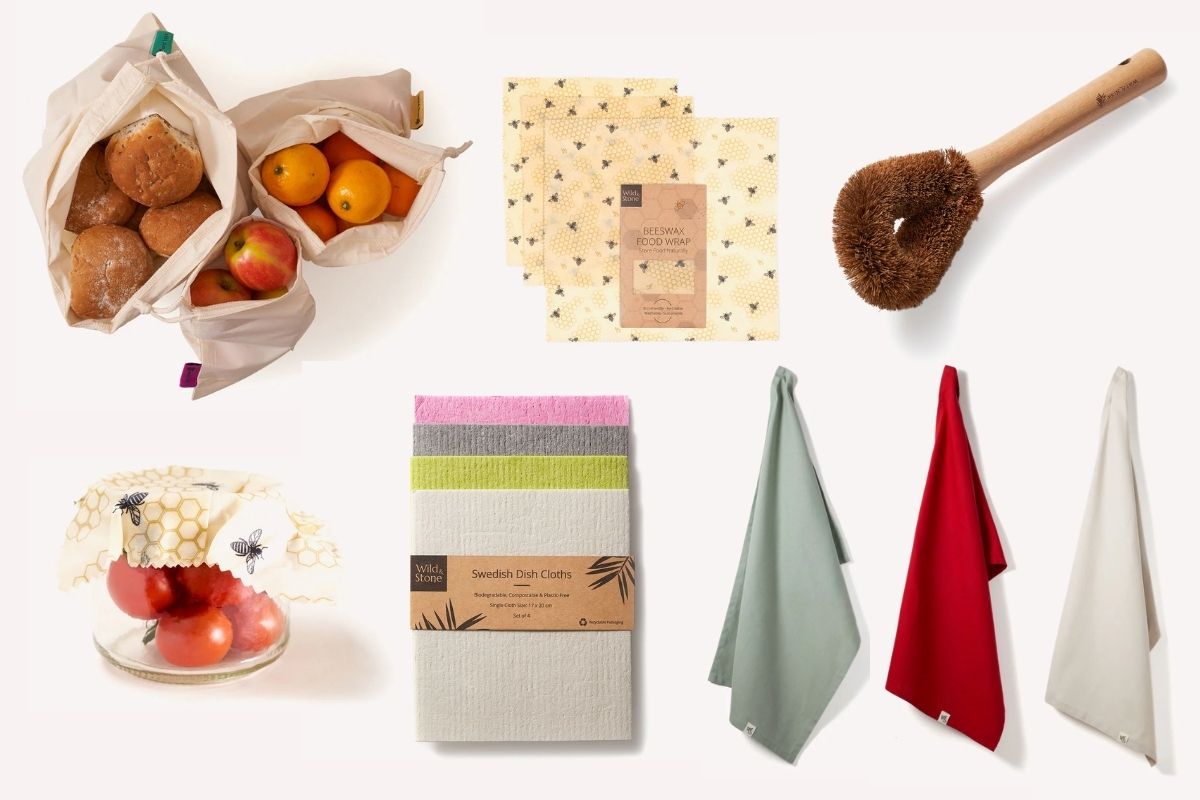Your Cart is Empty
INFO

Veganuary Tips for 2023
January 10, 2023 5 min read
Veganuary is non-profit organisation and movement that encourages people worldwide to go vegan in January and beyond. Their work throughout the year supports individuals and businesses to move to a plant-based diet to protect the environment and animals, as well as to improve the health of millions of people.
And the benefits speak for themselves. Well-planned vegan diets contain all the nutrients that our bodies need, and some research has linked going vegan with weight loss, lower blood pressure and cholesterol, as well as lower rates of heart disease and type 2 diabetes. Not to mention that it's better for the planet. A report from the United Nations’ Intergovernmental Panel on Climate Change details that plant-based diets were associated with the greatest reductions in greenhouse-gas emissions, and have a high potential for reducing carbon footprints and mitigating climate change.
For a lot of people then, going vegan makes up one of their sustainable New Years’ resolutions. However, it can be hard to stick to, with an estimated 84% of vegans abandoning their diet. Going vegan, even just for a month, requires both commitment and sacrifice, which isn’t always easy to do.
To help you master Veganuary 2023, and encourage you to stick to veganism beyond that point, we’ve compiled a list of our top Veganuary tips.
1. Plan Meals in Advance
Try your best to prepare batches of food at the start of the week that will provide you with lunches and dinner for (at least) several days.
This ensures that you're not caught without anything to eat, as you'll have a range of delicious vegan meals prepared. This is also great for when you can't be bothered to cook, and might be tempted to fall off the vegan wagon. Try to include a variety of different fruits, vegetables, whole grains, and plant-based protein, iron and calcium sources in your meals to make sure you're getting all of the nutrients you need.
For breakfasts, stock up on cupboard and fridge essentials like granola, bread, porridge, fruit, avocado, and dairy-free milk and butter. This will mean you have all the ingredients that you need to create a quick, simple and delicious breakfast throughout the week.

To make it even easier, you can “vegan” your favourite meals. Write down the meals you eat on a regular basis now, and think of ways you can replace the meat and dairy products with vegan alternatives.
This might mean you switch the mince in your spaghetti bolognese for lentils or a fake mince (like Quorn or Meatless Farm), or that your quesadilla will use vegetables and vegan cheese instead of meat and regular cheese. Most of the time, you won’t have to think too outside the box.
2. Invest in Snacks
On a similar note, don’t just rely on mealtimes to keep you full… stock up on vegan snacks to keep you going in between. These don’t have to be too different to what you eat at the moment — alongside the obvious fruit and veg, lots of snack bars and crisps are vegan, and there are heaps of other vegan snacks in most supermarkets.
Need help knowing where to look? Last year, we shared our top vegan brands to help you find vegan products, as well as to encourage and support individuals and businesses to move permanently to a plant-based diet after Veganuary is over.
3. Try Creative Recipes
If you’re looking for more of a challenge, try some creative recipes. From colourful veg- and protein-packed dishes, to creating your own fake chicken using water and flour or vegan fish with banana blossom, being creative with your food will keep you engaged and excited about Veganuary for longer.
4. Eat Out
From meal deals and fast food chains, to independent and high-end vegan restaurants, there are more vegan options now than ever. Take advantage of this, and treat yourself to some delicious vegan food outside of the house. You’ll get to experience new flavours, as well as discover new ways to enjoy some vegan staples — who knew Tofu had so much potential?

Don’t forget to vegan your coffee order, also! Pop a reusable coffee cup in your bag and switch your dairy milk for an oat, soya, almond or coconut alternative.
5. Invest in Simple Swaps
Although lots of Veganuary is focused on food, if you’re planning to go vegan in all other aspects of your life, then it’s time to invest in simple, sustainable swaps. By this, we mean vegan alternatives to common household items that are better for the planet than their non-vegan counterparts. From kitchen, bathroom and cleaning products to health and beauty essentials, here’s a few of our favourite swaps.
- Beeswax food wraps, instead of cling-film.
- Reusable produce bags to store fruit and vegetables.
- Bamboo toothbrushes and natural dental floss, instead of plastic.
- Reusable knives, forks, spoons and straws, instead of single-use cutlery sets.
- Cruelty-free and vegan makeup can be found in most stores. Top tip: You can use reusable cotton pads and buds to take it off, instead of disposable wipes.
This way, even if you stop being vegan after the month is over, you’ll have some reliable and long-lasting products that you can continue to invest in.

6. Second-Hand Shop
Love to shop? Consider going second-hand! Although buying new isn’t necessarily not vegan, lots of new products require non-vegan processes — or processes that are otherwise bad for the planet. When you purchase second-hand products, you don’t buy into the demand that the fast-fashion industry requires. In time, this reduction in demand will mean less is made, and less unnecessary waste enters the world (at the moment, 10,000 items of clothing are sent to landfill every five minutes).
Explore vintage and charity shops in your area, or check out online marketplaces like eBay, Vinted and Depop, before you buy new. If you’re reluctant to move away from animal-based clothing, accessories and shoes, buying second-hand (or renting) is still a better option than buying new.

7. Check the Label
Last but not least, don’t forget to check the label! Lots of products that seem vegan on the surface contain a sneaky non-vegan ingredient. Common animal-derived ingredients to watch out for include gelatine, casein, and whey.
A good rule of thumb is that if it doesn’t say it’s vegan, it probably isn’t.
Don’t beat yourself up if you do slip up or fall off the wagon, though. Veganuary is a challenge for a reason, so making a mistake (or taking the occasional shortcut) is all part of the process.
Good luck! Got more Veganuary tips? Share them below to help inspire others.
—
Wild & Stone's mission is to create stylish, easy to adopt and usable alternatives to common plastic products around the home. We source all our products sustainably, from raw material to final delivery. Shop our home & lifestyle products on our website.
Share your plastic-free swaps with us at hello@wildandstone.com or tag us on Instagram #wildandstone.
Also in Sustainable Living Blog

The 5 Benefits of Using a Bamboo Toothbrush
August 07, 2025 4 min read
Discover five benefits of using a bamboo toothbrush, from saving the planet and oral health to the fastest plant in the world.

The 5 Best Eco-Friendly Kitchen Products
July 30, 2025 4 min read
Discover the 5 best eco-friendly kitchen products to take care of yourself, your home & the environment.
Make your inbox a little more eco!
Sign up and save 10% on your first order of 2 items or more.
Keep an eye on your inbox for the latest eco trends, articles, deals and product releases.



